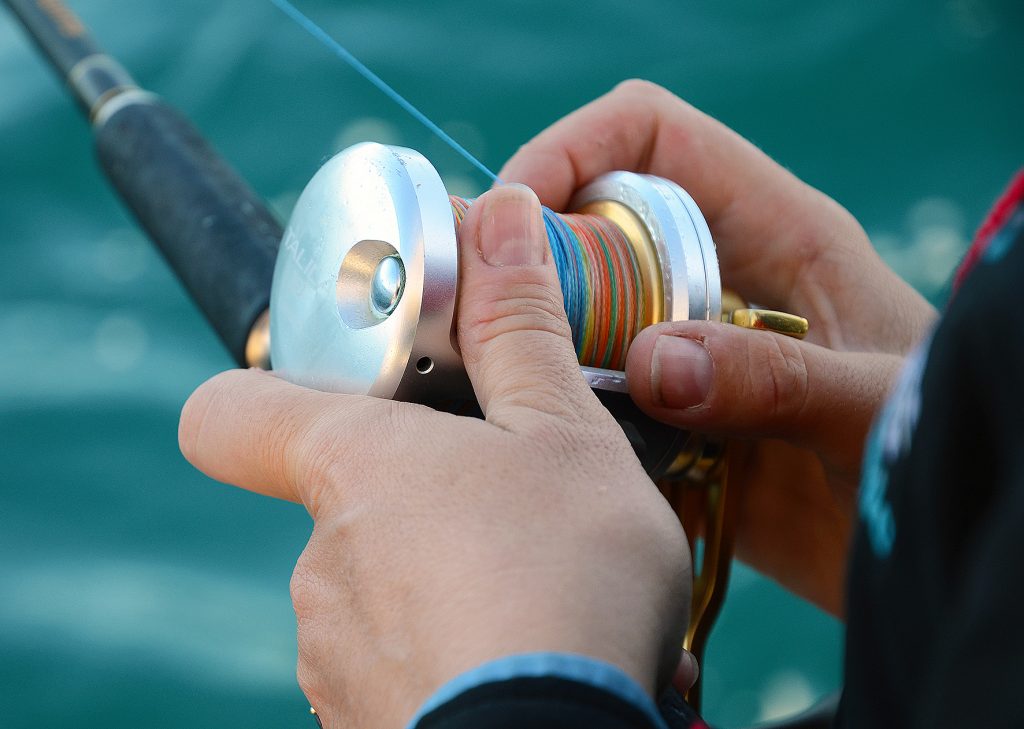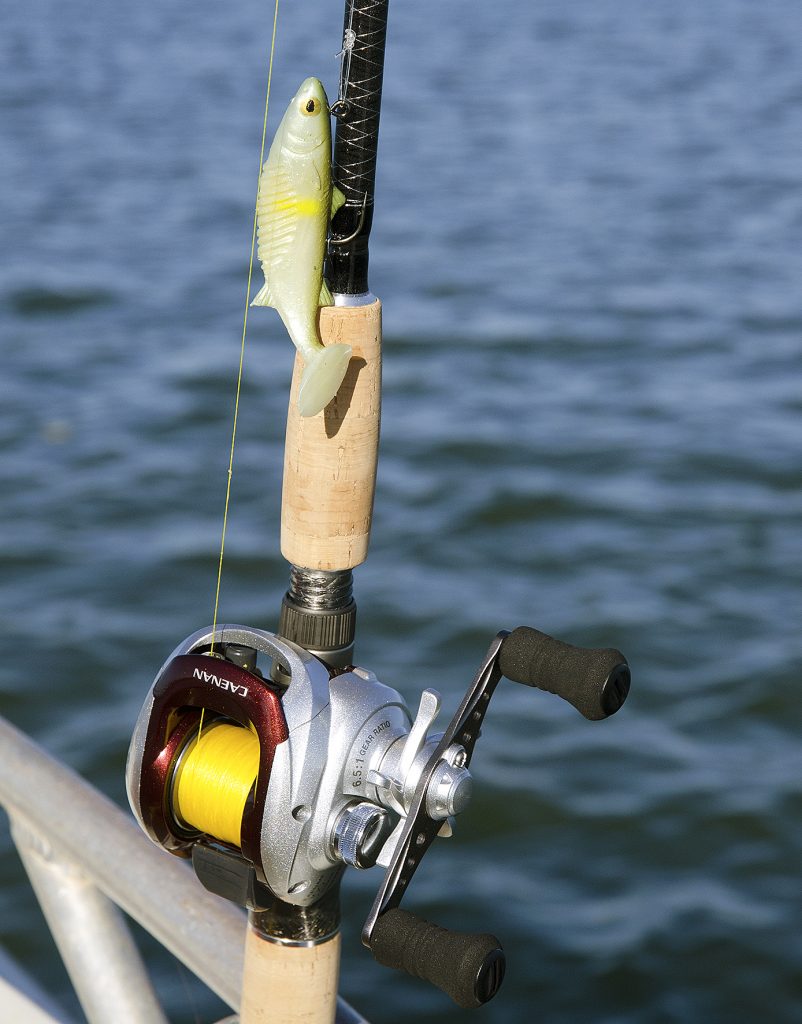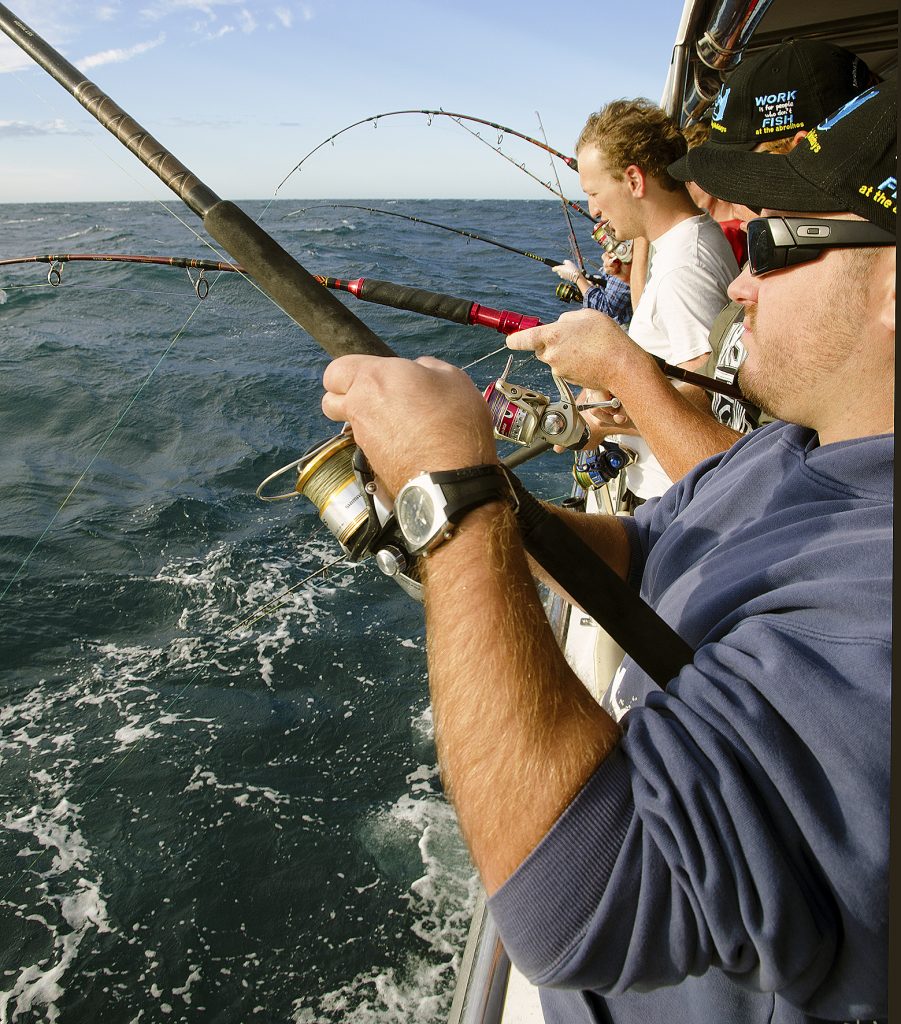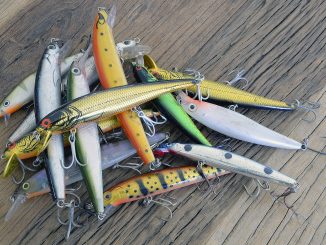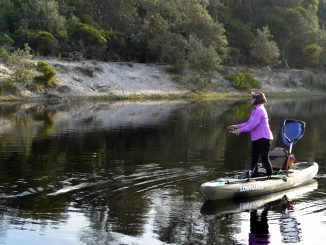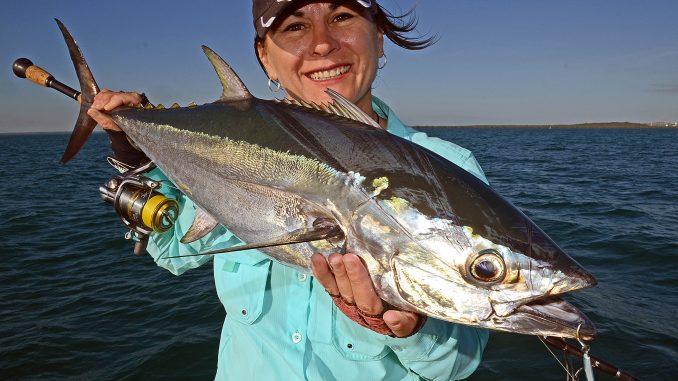
• by Steve ‘Starlo’ Starling (first published November 2021)
Retrieve speeds can be really important in many styles of lure fishing, and those speeds are dictated by several factors, including your reel’s gear ratio.
Some fishers remain a little confused about the meaning and impact of different gear ratios in fishing reels. So, let’s have a look at what gear ratios actually are, what they mean, how they impact your day-to-day fishing, and which ones best suit the styles of fishing you do.
Direct drive, non-geared reels such as most centrepins, sidecasts and fly reels have a retrieve ratio of one-to-one. In other words, each full rotation of the handles turns the spool one complete turn. By contrast, in all geared reels — threadlines or spinning reels, overheads, baitcasters and the like — one complete turn of the handles results in more than one turn of the spool or, in the case of spinning and closed-face reels, the mechanism that recovers line and wraps it around the spool. So, these reels have a gear ‘ratio’, which is expressed in terms such as 4:1, 5.2:1, 7:1 or whatever. In that measurement, the first number tells us how many times the spool or pick-up mechanism spins each time we rotate the handle through one full turn, as expressed by the numeral ‘1’ after the colon.
The higher that first number, the ‘faster’ the reel. In other words, the more times the spool or pick up spins for every turn of the handle. Obviously, this has a direct impact on how much line is retrieved every time we spin the handle — although there are also other factors that impact actual retrieve speeds.
Now, you might think that high retrieve rates are a good thing, and that all reels should be geared to be as fast as possible. After all, if we want to slow down our retrieve — perhaps to give a better action to a certain lure — we can simply slow down the rate at which we turn the handle, right? While that’s true, high speed gearing also comes with certain mechanical disadvantages. For starters, the higher the gear ratio, the greater the difference in physical size between the main gear and the pinion gear inside the reel. Obviously, there are practical limitations on how dramatic that difference can be. They come down to the sheer size of main gear you can fit inside the reel’s housing, and also the fact that, as the pinion gear reduces in size, it can become weaker and more prone to wear and tear — or even to complete failure under extreme stress.
When I was growing up in an era that saw a blossoming of the sport of ‘high speed spinning’ for tuna and kingfish from the ocean rocks, the need for speed was paramount. In those days, gear ratios of 6:1 or higher and actual retrieve rates in excess of a metre of line per handle turn were the Holy Grail. Those who could achieve such flat-stick retrieves definitely caught more of these fast-swimming pelagic species. But there were trade-offs, too, and the old 621 Seascape Australian-made overhead — the first reel to achieve such high speeds — was notorious for failing under extreme load. At times, its tiny pinion gear would simply shatter like a cracked walnut during a torrid encounter with a heavyweight fish.
Happily, manufacturing methods, construction techniques and metallurgy have all come a long way since the 1960s and ’70s. Today’s high-speed reels are much more reliable than the old Seascapes, and such catastrophic gear failures are rare indeed these days. But you still need to accept that a very highly-geared reel may wear and deteriorate sooner than a slower one.
The other reality is that highly geared reels are harder to turn under load than slower reels. This is because of exactly the same principles that apply to pushbike gears, or the winch on your boat trailer. Lower gearing means you have to make more turns or rotations to achieve the same result, but those rotations can be performed with a lot less effort — whether your pedalling your bike up a steep hill, or winching a heavy boat back onto its trailer.
So, lower gearing is effectively more ‘powerful’ than higher gearing. That’s exactly why some sophisticated game reels and overheads have dual gearing: a fast ratio for quickly recovering line, and a slower one for cranking heavy, stubborn fish out of the depths.
As mentioned, gear ratios aren’t the only input governing retrieve speeds. There are two other factors to consider. One is the effective circumference of the spool and the other is how fast we spin those handles.
Spool circumference is an often overlooked component of actual retrieve speed, but it’s an important one. A reel spool with a 60mm diameter has a circumference of around 188mm. On the other hand, a spool with a diameter that’s just 5mm larger at 65mm has a circumference just over 204mm. Clearly, this impacts actual retrieve speeds. Two reels with exactly the same gear ratio – say 5:1 – will retrieve different amounts of line per handle turn if they have different sized spools. The one with a 60mm spool diametre will pick up just over 94cm of line per handle turn, while the reel with the 65mm wide spool recovers more than 102cm per crank of the handle. Obviously, this will vary depending on how full the spool is. If your line load is well down, spool circumference is reduced and your reel will be slower to retrieve line. That’s worth remembering, too.
These days, some reel makers list the length of line retrieved each handle turn (with a full spool), and that can be very useful when choosing the right model for your purposes. If you’re chasing fast-swimming pelagic fish, it can be very handy to have a reel that rips in at least 95 or 100cm of line per handle turn.
Finally, how fast you can spin those handles directly impacts your actual retrieve speed. This comes down to the smoothness of the gears, the length of the handle shaft, and how dexterous or skilled you are. You need to factor in all of these things when choosing between different makes and models of reel.


